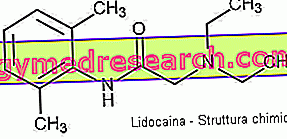Urethritis is the acute or chronic inflammation of the urethra, a small duct that conveys urine from the bladder to the outside. It is often accompanied by urethral pain and burning, which become more intense during urination.
Causes
The urethritis recognizes various random agents and the etiology can be from time to time viral, bacterial, fungal, iatrogenic or traumatic. Generally it is caused by pathogenic microorganisms that colonize the urethra via ascending (from the outside, through sexual contact), via the bloodstream (from remote infectious foci) or downward (from the bladder, for example during cystitis).

In the case of ascending or retrograde urethritis, sexual contagion and intimate hygiene habits play an extremely important role. The female urethra, shorter than the male urethra, together with the absence of the bactericidal effect of prostatic secretions and other unfavorable anatomical peculiarities, makes the woman more susceptible to retrograde urethritis, such as those transmitted sexually. The male, in which the urethra is the common tract of the urinary and genital apparatus, is instead more sensitive to urethritis of anterograde or ascending origin. For this reason the pathology is often associated with prostatitis, whose symptoms include pains in the rectal region, fever, asthenia, sexual disorders and difficulty in urinating.
The classic symptomatology of urethritis is the purulent urethral secretion, associated with burning during urination; in some cases the patient may be asymptomatic or complain of minor ailments.
To learn more: Urethritis symptoms
Urethritis transmitted sexually
Frequently urethritis is caused by sexually transmitted infectious diseases (vaginal, oral and anal) such as the fearsome gonorrhea, also known as blenorrhagia or blenorrhoea. A first distinction can be made between urethritis of gonocco (UG) and non-gonocco (UNG) origin.
The prevention of sexually transmitted forms is implemented with the use of a condom at all stages of sexual intercourse.
URONRITE GONORROICA or GONOCOCCICA
The pathogenic micro-organism responsible for inflammation is Neisseria gonorrhoeae, which at first causes purulent urethritis (dense urine, greenish-yellow in color, with pus) both in the male and in the female, in which the course is more frequently asymptomatic. When the disease becomes chronic, it can give rise to various disorders. In women, the most frequent symptom is cervicitis (inflammation of the uterine mucosa associated with mucopurulent secretions and a sense of harassment).
RISK FACTORS: sexual promiscuity, use of non-protective contraceptives, often asymptomatic course of infection; increased resistance of the microorganism to antibiotics.
INCUBATION PERIOD: without symptoms, it varies from 3 to 7 days.
It is a widespread disease, especially among adolescents and young adults, which recognizes sexual promiscuity as the main etiological agent. For this reason, antibiotic therapy for gonorrheal urethritis should also be extended to sexual partners with whom the patient has had intercourse for 60 days prior to the onset of the disease. There is also the risk that healthy carriers of the disorder transmit gonorrheal urethritis to the partner, even though they do not show signs of it or complain of minor ailments.
URETRITE BY CHLAMYDIA TRACHOMATIS
Chlamydia is the etiologic agent most frequently involved in the origin of non-gonoccal urethritis. In women, Chlamidya infections are asymptomatic in about 70% of cases, in humans this percentage drops to 50%. It is therefore possible that the disorder arises after years of quiescence, perhaps due to a temporary lowering of the immune defenses.
The complications of the pathology are similar to those described for gonorrheal urethritis, although they occur more rarely and are often small. Pregnant women should be tested for Chlamydia during the third semester of pregnancy and, if positive, treated before delivery.
Also in this case the most endangered population is the one between 14 and 29 years old. Antibiotic therapy should be extended to partners with whom the patient has had sexual intercourse in the 60 days prior to the onset of symptoms, even though, considering the possible asymptomatic nature of the pathology, Chlamidia urethritis may be the result of sexual intercourse that occurred several months before diagnosis.
OTHER TYPES OF URETRITIS FROM SEXUALLY TRANSMITTED PATENT AGENTS
Often urethritis, caused by a particular pathogen, is associated with infection of other minor microorganisms which, however, have little relevance in percentage terms, since they rarely represent the true causative agents of the disease. These include Trichomonas vaginalis, Mycoplasma hominis and genitalis, Herpes viruses and Ureaplasma urealiticum.
Urethritis - Video: Causes, Symptoms, Cures
X Problems with video playback? Reload from YouTube Go to Video Page Go to Wellness Destination Watch the video on youtubeOther causes of urethritis
Urethritis can also be linked to non-infectious causes, for example to small trauma to the urethra such as the use of catheters, the presence of kidney stones, cycling, riding or riding. There are also allergic urethritis in which the disorder is linked to the ingestion of particular foods, the use of certain drugs or catheters.
Drugs to treat urethritis »



